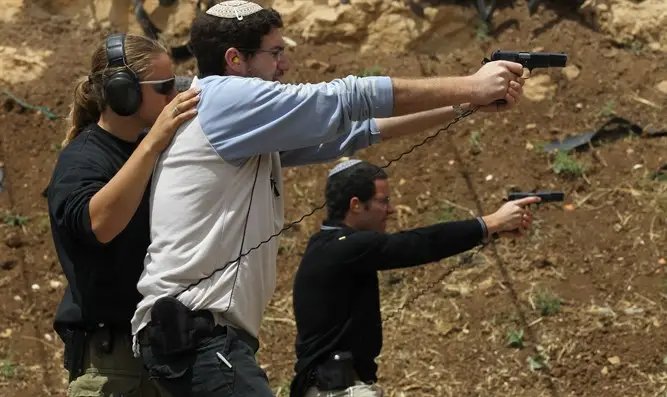Most modern militaries and law enforcement agencies train to employ their weapons from Condition 1. That is, magazine inserted, round in the chamber and safety engaged. All that is needed to get a round off is to aim, disengage the safety (or safeties), and press the trigger to its break. One country that does not follow this standard is Israel. The practice of carrying in Condition 3, or magazine inserted without a round in the chamber, is also known as “Israeli carry” for its popularity in the Jewish State. Israeli carry is taught as the handgun standard in both the Israel Defense Forces and Israel Police. However, the practice did not originate in Israel.
During the age of gunslingers in the Wild West, it was not uncommon for six-shot revolvers to be carried with only five rounds chambered in the cylinder. The revolver would be carried with the hammer down on the empty chamber to prevent sharp knocks or blows to the weapon from causing the hammer to fire a chambered cartridge unintentionally. This practice was even carried into the early 20th century with the advent of autoloading pistols.

The 1940 publication of FM 23-35, the War Department’s Basic Field Manual for the M1911 pistol, calls for carrying in both Conditions 3 and 1. “In campaign, when early use of the pistol is not foreseen, it should be carried with a fully loaded magazine in the socket, chamber empty, hammer down,” it reads. “When early use of the pistol is probable, it should be carried loaded and locked in the holster or hand.” Carrying with the magazine inserted, chamber empty, and hammer down is Condition 2.

There are different theories as to why Israel adopted carrying on an empty chamber, all revolving around safety. One theory is based on the fact that many early IDF weapons were surplus WWII weapons from a wide array of different countries. Creating standard practices for a the military equipped with an assortment of weapons would be difficult, so Condition 3 carry was adopted to ensure safety and commonality across the board.
Another theory is also based on the IDF’s acquisition of surplus weapons. Many of these firearms were in well-used condition after making it through WWII. As a result, safety mechanisms were not guaranteed to function properly, so carrying on an empty chamber was implemented as a guaranteed safety. Israel’s mandatory military service is the basis of the final theory. With all citizens having to serve a minimum of just 24-32 months, a lot has to be taught in a short period of time to turn civilians into soldiers. Mandating Condition 3 helps to prevent accidental discharges with these types of troops.

Israeli carry calls for the pistol to be drawn with one hand as the other hand grips the slide. As the weapon is presented and aimed, the slide is pulled back to chamber a round. Although it is slower than carrying with one in the chamber, the argument for Israeli carry is the emphasis of safety. However, it does require that the chambering/presentation motion be trained properly to ensure that a round is ready to fire when the weapon is aimed.

It’s worth noting that Israeli carry does not apply to rifle doctrine. Moreover, not all IDF units mandate carrying in Condition 3. Echoing the 1911 manual, units like special forces who are more likely to use their pistol in combat can be permitted to carry in Condition 1. In the end, carrying with one in the chamber or not comes down to training. Condition 1 requires trigger discipline, a quality firearm with good safeties, a holster that protects the trigger from being accidentally pulled, and training to disengage the thumb safety (if applicable). On the other hand, Condition 3 requires the shooter to add an action before they can employ their weapon. While this is considered safer overall, it can mean the difference between life and death if not done correctly.


